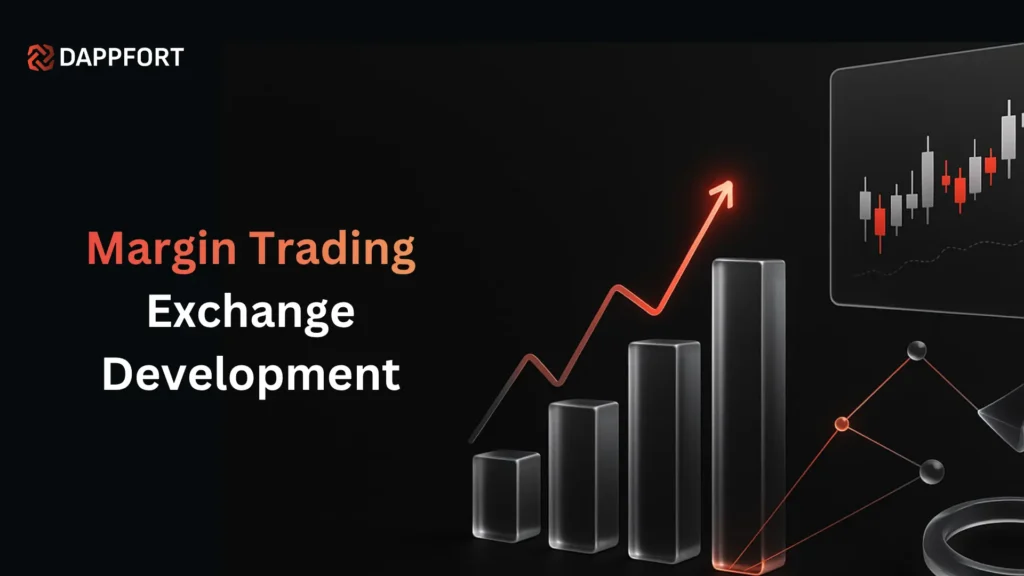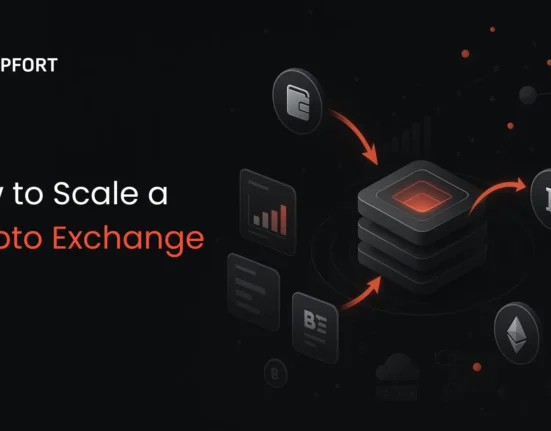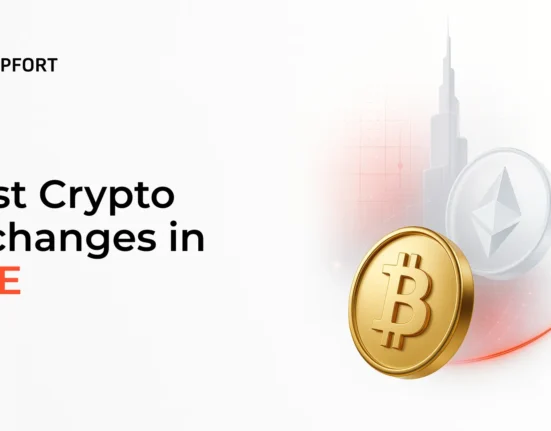Margin Trading Exchange Development: Building a Profitable and Secure Platform for Crypto Traders

Table of Contents
The cryptocurrency market has witnessed explosive growth over the past few years, with global adoption reaching unprecedented levels. As institutional investors and retail traders alike seek sophisticated tools to maximize their returns, margin trading has emerged as one of the most sought-after features in the crypto trading ecosystem. In fact, margin trading platforms have become a significant driver of growth, accounting for billions in daily trading volume across major exchanges.
For entrepreneurs and startups looking to enter the crypto exchange space, developing a margin trading platform presents a lucrative opportunity. With traders demanding advanced features and leveraged positions, launching a margin trading exchange can position your business at the forefront of this rapidly evolving industry.
What is Crypto Margin Trading?
Crypto margin trading is a method that allows traders to borrow funds to increase their trading position beyond what their actual capital would permit. Essentially, it enables traders to amplify their potential profits by using leverage—trading with borrowed money from the exchange or other users.
For example, if a trader has $1,000 and uses 10x leverage, they can open a position worth $10,000. This magnification effect means that even small price movements can result in significant gains. However, it’s a double-edged sword—losses are also amplified proportionally, making margin trading a high-risk, high-reward strategy.
What is a Margin Trading Exchange?
A margin trading exchange is a specialized cryptocurrency trading platform that facilitates leveraged trading by providing traders with borrowed funds. Unlike standard crypto exchanges that only allow spot trading with available capital, margin trading exchanges offer lending pools, collateral management systems, and sophisticated risk management tools.
For startups, developing a margin trading exchange represents a strategic entry point into the competitive crypto market. These platforms attract professional traders willing to pay premium fees, generate revenue through interest on borrowed funds, and create a loyal user base seeking advanced trading capabilities. The technical infrastructure required—including real-time liquidation engines, margin calculators, and multi-tier security—positions your platform as a serious player in the institutional-grade exchange ecosystem.
Margin Trading Exchange Development
Margin trading exchange development involves building a secure and high-performance platform that allows traders to amplify their positions using borrowed funds. These trading platforms offer advanced trading tools, including leverage options, risk management mechanisms, and liquidity solutions, making them essential in today’s competitive financial markets.
Dappfort, we specialize in customized margin trading exchange development tailored to your business needs. From integrating robust risk management features and liquidity solutions to ensuring seamless user experiences and regulatory compliance, our solutions empower businesses to provide a secure and efficient trading environment, helping them stay ahead in the evolving crypto market.
How Does Crypto Margin Trading Work?
Understanding the mechanics of margin trading is crucial for both platform development and user education. Here’s how the process works step-by-step:
Step 1: Account Setup and Collateral Deposit Traders must first deposit collateral into their margin account. This collateral serves as security for the borrowed funds and is typically held in cryptocurrency like Bitcoin, Ethereum, or stablecoins.
Step 2: Borrowing Funds Once collateral is deposited, traders can borrow funds based on the leverage ratio offered by the exchange. If an exchange offers 10x leverage and a trader deposits $1,000, they can borrow up to $9,000 to trade with a total position of $10,000.
Step 3: Opening Positions Traders use the borrowed funds to open long (betting on price increase) or short (betting on price decrease) positions. The entire position value, including borrowed funds, is now exposed to market movements.
Step 4: Profit or Loss Calculation As the market moves, profits or losses are calculated based on the total position size. A 10% gain on a $10,000 position (with $1,000 initial capital) results in a $1,000 profit—effectively doubling the initial investment. Conversely, a 10% loss would wipe out the entire initial capital.
Step 5: Liquidation or Position Closure If losses approach the collateral value, the exchange automatically liquidates the position to protect the lender. Traders can also manually close positions to realize profits or cut losses. Upon closure, borrowed funds are returned, interest is paid, and remaining profits or losses are credited to the trader’s account.
Working Example: Sarah deposits $5,000 USDT as collateral and chooses 5x leverage to trade Bitcoin. She borrows $20,000, creating a total position of $25,000. If Bitcoin’s price increases by 8%, her position gains $2,000. After repaying the borrowed $20,000 plus interest (let’s say $50), she’s left with $7,000 in her account—a $1,950 profit on her initial $5,000, representing a 39% return. Without leverage, the same 8% market move would have only netted her $400.
Margin Trading Exchange Development Process
Building a robust margin trading exchange requires meticulous planning and execution across multiple development phases:
Project Planning & Scope
Begin with comprehensive market research to identify your target audience, competitive positioning, and unique value propositions. Define the technical architecture, compliance requirements, and regulatory framework for your target jurisdictions. Establish clear project timelines, budget allocations, and success metrics.
Core Feature Integration
Develop the fundamental trading engine capable of handling high-frequency transactions with minimal latency. Implement order matching algorithms, leverage calculators, and collateral management systems. Integrate wallet infrastructure supporting multiple cryptocurrencies, and build intuitive user interfaces for both web and mobile platforms.
Risk Management & Liquidity
Design automated liquidation mechanisms that trigger when positions reach critical thresholds. Establish lending pools and liquidity provider partnerships to ensure sufficient borrowed funds. Implement margin call notifications and partial liquidation features to give traders opportunities to add collateral before complete position closure.
Security & Compliance
Deploy multi-layer security including cold storage wallets, two-factor authentication, DDoS protection, and encryption protocols. Integrate KYC/AML verification systems to meet regulatory requirements. Conduct thorough penetration testing and security audits before launch. Establish compliance frameworks for anti-money laundering and data protection regulations.
Features of Our Margin Trading Exchange Software
A competitive margin trading platform must include these essential features:
Multi-Asset Support: Enable trading across diverse cryptocurrency pairs with varying leverage options for each asset class.
Real-Time Margin Calculator: Provide traders with instant visibility into available margin, required collateral, and liquidation prices.
Advanced Order Types: Support market, limit, stop-loss, take-profit, and trailing stop orders to accommodate sophisticated trading strategies.
Liquidation Engine: Automated system that monitors positions continuously and executes liquidations at optimal prices to minimize losses.
Interest Rate Transparency: Clear display of borrowing costs and interest accrual in real-time.
Portfolio Analytics: Comprehensive dashboards showing open positions, profit/loss tracking, margin utilization, and trading history.
API Integration: RESTful and WebSocket APIs enabling algorithmic trading and third-party integrations.
Mobile Trading Apps: Native iOS and Android applications with full trading functionality.
Add-on Features for Enhanced Trading Experience
Differentiate your platform with these value-added features:
Copy Trading: Allow novice traders to automatically replicate the positions of successful traders, creating a social trading ecosystem.
Trading Bots: Integrate customizable automated trading bots for executing predefined strategies.
Staking and Yield Farming: Enable users to earn passive income on idle collateral and unused funds.
Futures and Options: Expand beyond spot margin trading to offer derivatives products.
Advanced Charting Tools: Integrate TradingView or similar professional charting platforms with technical indicators.
Multi-Language Support: Cater to global audiences with comprehensive localization.
Different Margin Trading Modes (Isolated vs. Cross)
Understanding margin modes is critical for both platform design and user education:
| Feature | Isolated Margin | Cross Margin |
| Risk Exposure | Limited to position collateral | Entire account balance at risk |
| Liquidation | Only affects specific position | Can liquidate all positions |
| Flexibility | Must manage each position separately | Automatic margin rebalancing |
| Best For | Risk-averse traders, testing strategies | Experienced traders, preventing liquidations |
| Collateral | Dedicated per position | Shared across all positions |
Most professional platforms offer both modes, allowing traders to choose based on their risk appetite and trading strategy.
Benefits of Margin Trading Exchange Development
Entering the margin trading exchange market offers compelling advantages:
High Revenue Potential: Generate income through trading fees, interest on borrowed funds, and liquidation fees—creating multiple revenue streams.
Premium User Base: Attract professional traders who execute high-volume trades and tolerate higher fee structures for advanced features.
Market Differentiation: Stand out in the crowded exchange market by offering sophisticated tools that basic platforms lack.
Institutional Appeal: Position your platform to attract institutional clients seeking professional-grade trading infrastructure.
Scalable Business Model: As trading volume grows, revenue scales without proportional increases in operational costs.
Innovation Opportunities: Continuously develop new features, margin products, and derivative offerings to maintain competitive advantage.
Difference Between Margin Trading and Leverage Trading
While often used interchangeably, there are subtle distinctions worth noting for SEO and user clarity:
Margin Trading specifically refers to borrowing funds against collateral to increase position sizes. The borrowed amount and collateral requirements are explicit.
Leverage Trading is a broader term encompassing any method of amplifying trading positions, including margin trading, futures contracts, and options. Some leverage products don’t involve explicit borrowing but achieve similar effects through derivatives.
In practical terms, when users search for either term, they’re typically seeking the same functionality—the ability to trade with more capital than they possess.
Advanced Risk Management Features
Sophisticated risk management separates professional platforms from basic exchanges:
Tiered Liquidation: Gradually reduce position size rather than complete liquidation, giving traders more chances to recover.
Insurance Funds: Maintain reserve pools to cover losses from failed liquidations, protecting the lending pool.
Dynamic Leverage Limits: Adjust maximum leverage based on market volatility and asset liquidity.
Margin Call Notifications: Multi-channel alerts via email, SMS, and push notifications when positions approach liquidation.
Position Limits: Restrict maximum position sizes to prevent excessive risk concentration.
Circuit Breakers: Automatic trading halts during extreme volatility to prevent cascading liquidations.
Why Choose Dappfort for Margin Trading Exchange Development?
Dappfort, a leading crypto exchange development company, specializes in creating high-performance margin trading exchanges with advanced features. Our solutions are designed to provide traders with leverage trading capabilities while ensuring robust risk management, liquidity integration, and security compliance.
With a team of expert blockchain developers, Dappfort delivers customized, scalable, and user-friendly trading platforms tailored to meet business-specific needs. Whether you’re launching a new margin trading exchange or upgrading an existing one, our advanced technology ensures seamless performance and long-term success.
✅ Industry-Leading Crypto Exchange Solutions
✅ Advanced Leverage & Risk Management Tools
✅ Liquidity Integration for Smooth Trading
✅ Regulatory Compliance & High-End Security
✅ Customizable & Scalable Trading Platforms
✅ Agile Development with On-Time Delivery
Ready to launch your margin trading exchange? Partner with Dappfort to transform your vision into a market-leading platform. Contact us today for a consultation and discover how we can accelerate your entry into the lucrative crypto exchange market.


